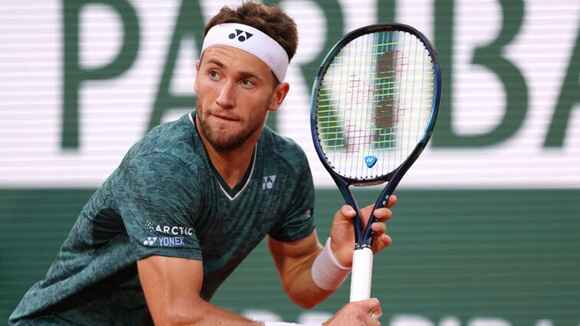Norwegian tennis star Casper Ruud has sparked an important debate within the sport by calling for a fairer distribution of Grand Slam revenue among players. Ruud believes that while the four major tournaments generate massive profits, players do not receive a proportionate share of the earnings. His concerns highlight a long-standing issue in professional tennis—ensuring equitable financial compensation for those who make the sport what it is.
The Financial Disparity in Tennis
Grand Slam tournaments—Australian Open, French Open, Wimbledon, and the US Open—are the most prestigious events in tennis, drawing millions of viewers and generating substantial revenue through ticket sales, sponsorships, and broadcasting rights. However, Ruud argues that the players, who are the main attraction, are not benefiting adequately from these earnings.

Tennis prize money has increased over the years, but compared to revenue growth, the percentage going to players remains disproportionately low. Unlike team sports such as football and basketball, where players have collective bargaining agreements ensuring a fair share of revenue, tennis lacks a structured revenue-sharing model.
Casper Ruud’s Perspective on the Issue
Ruud, currently one of the top-ranked players in the world, has voiced his concerns about how Grand Slam earnings are distributed. He believes that professional players, especially those ranked outside the top 50, struggle financially due to high travel costs, coaching expenses, and other operational expenditures.
In an interview, Ruud emphasized that while top-ranked players earn significant prize money and sponsorships, lower-ranked players find it difficult to sustain their careers. The Norwegian star’s statements have reignited conversations about whether Grand Slam organizers should allocate a higher percentage of their revenue to the players.
Comparisons with Other Sports
Tennis differs from many other global sports in terms of revenue distribution. In leagues such as the NBA and the English Premier League (EPL), athletes receive a substantial portion of the revenue generated by their respective competitions. The NBA, for example, operates on a revenue-sharing model where players receive nearly 50% of league revenue.
In contrast, Grand Slam tournaments reportedly allocate a much smaller percentage of their profits to player prize money. This discrepancy raises questions about whether tennis should adopt a more player-friendly financial structure, similar to other professional sports.
Challenges in Implementing a Fairer System
One of the major challenges in redistributing Grand Slam revenue is the complex structure of tennis governance. Unlike team sports governed by a single league or federation, tennis has multiple governing bodies, including the ATP, WTA, ITF, and the Grand Slam committees. Each has different financial interests, making it difficult to implement a standardized revenue-sharing model.
Additionally, tournament organizers argue that hosting a Grand Slam involves significant expenses, including venue maintenance, staff salaries, and logistical costs. Increasing prize money may put financial strain on tournament organizers unless alternative revenue streams are explored.
The Future of Tennis Revenue Distribution
Ruud’s comments have intensified discussions within the tennis community, with players and analysts debating potential solutions. Some suggest a players’ union to negotiate better terms, while others propose a structured revenue-sharing model similar to major team sports.
Grand Slam tournaments have made incremental increases in prize money over the years, but a more balanced system is still needed. If Ruud’s calls gain traction, tennis could witness a shift toward a fairer financial model that benefits a broader spectrum of players.
Conclusion: A Step Toward Financial Equity
Casper Ruud’s advocacy for fairer revenue distribution in Grand Slam tournaments has brought attention to an issue that has long been overlooked. While top-ranked players continue to thrive financially, many lower-ranked players struggle to make a living. Addressing this disparity is crucial for the sport’s future, ensuring that tennis remains competitive, sustainable, and fair for all players.
As discussions continue, it remains to be seen whether tennis authorities will take steps toward a more equitable system or maintain the status quo. One thing is certain—Ruud’s stance has sparked a necessary debate about financial fairness in professional tennis.